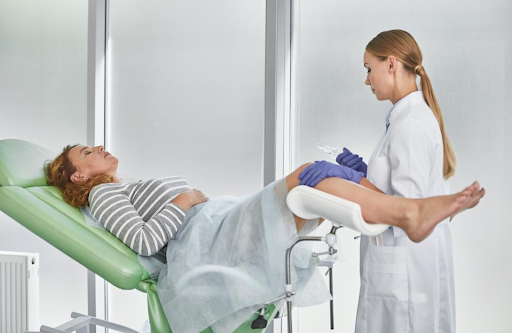Does Gabapentin Help with Sciatica?
Sciatica can cause sharp pain that shoots down your leg, making simple tasks hard. Many people wonder if gabapentin, a common medication, can ease this pain. This article [...]
Read More
Medically reviewed by Abhijit Bhattacharyya | MD, PhD, MBA, Tufts University School of Medicine - Miami, Florida on June 13th, 2025.
Understanding the causes and symptoms of vaginal infections is essential for maintaining reproductive and overall health. Two of the most common culprits—bacterial vaginosis (BV) and yeast infections—are often mistaken for one another due to overlapping symptoms. However, their causes, treatments, and prevention methods differ significantly. This article will help you differentiate between BV and yeast infections, recognize symptoms, and explore your options for diagnosis and care. If you're unsure which one you're experiencing, Doctronic, the AI-powered doctor, can help guide you toward the right solution with ease and privacy.
 Understanding Bacterial Vaginosis (BV)
Understanding Bacterial Vaginosis (BV)Bacterial vaginosis results from an imbalance in the vagina’s natural bacterial environment. Normally, beneficial bacteria like Lactobacillus help keep the vagina healthy. BV develops when harmful bacteria multiply and outnumber the good.
Common Symptoms of BV:
Thin, grayish-white vaginal discharge
Strong, fishy odor (especially after sex)
Vaginal itching or irritation
Burning sensation during urination
Not everyone with BV experiences noticeable symptoms, making it difficult to detect without professional evaluation. The odor, in particular, can affect confidence and relationships, emphasizing the importance of prompt attention.
The exact cause of BV is not fully understood, but several factors can contribute to the imbalance of bacteria:
Multiple sexual partners
New sexual partner
Use of douches or vaginal sprays
Smoking
These factors can disrupt the natural flora of the vagina, leading to an overgrowth of harmful bacteria. BV is not classified as a sexually transmitted infection (STI), but sexual activity can influence its development. Additionally, hormonal changes, such as those occurring during menstruation or pregnancy, can also play a role in the onset of BV, making it essential for individuals to be aware of their body’s changes and how they may impact vaginal health.
To diagnose BV, a healthcare provider will typically perform a pelvic exam and may take a sample of vaginal discharge for laboratory analysis. Treatment usually involves antibiotics, which can effectively restore the natural balance of bacteria. It’s essential to follow the prescribed treatment plan and avoid self-medicating, as this can lead to further complications. In addition to antibiotics, some healthcare providers may recommend probiotics to help restore healthy bacteria levels. Lifestyle changes, such as practicing safe sex, reducing the use of irritants like douches, and maintaining proper hygiene, can also be beneficial in preventing recurrence and promoting overall vaginal health.
Yeast infections, also known as candidiasis, are caused by an overgrowth of the fungus Candida, which is normally present in small amounts in the vagina. When the balance of microorganisms is disrupted, Candida can multiply, leading to uncomfortable symptoms. This imbalance can occur due to various factors, including lifestyle choices, dietary habits, and underlying health conditions. It's essential to recognize that while yeast infections are common, they can also be a sign of a more significant health issue if they occur frequently.
Yeast infections can present a range of symptoms, including:
Thick, white vaginal discharge resembling cottage cheese
Intense itching and irritation in the vaginal area
Redness and swelling of the vulva
Burning sensation during urination or intercourse
Unlike BV, yeast infections are typically characterized by a more pronounced itching sensation and a distinct discharge. In some cases, women may also experience discomfort in the lower abdomen or a general feeling of malaise. It's important to note that these symptoms can vary in severity and may be exacerbated by factors such as stress, lack of sleep, or poor diet.
Several factors can contribute to the development of a yeast infection:
Antibiotic use, which can disrupt the natural balance of bacteria
Hormonal changes, such as those occurring during pregnancy or menstruation
Diabetes, particularly when blood sugar levels are poorly controlled
Weakened immune system due to illness or medications
A healthcare provider can diagnose a yeast infection through a pelvic exam and laboratory tests of vaginal discharge. Treatment typically involves antifungal medications, which can be administered orally or as topical creams. It’s crucial to complete the full course of treatment to ensure the infection is fully resolved. In some cases, recurrent yeast infections may require a more extended treatment plan or a different approach, such as lifestyle modifications or alternative therapies. Yeast infections are typically diagnosed through a pelvic exam and microscopic analysis of a discharge sample. Treatment involves antifungal medications, available as creams, suppositories, or oral pills.
Not sure if it’s a yeast infection or something else? Doctronic.ai helps you narrow down your symptoms and provides clear steps on what to do next, including connecting with a licensed provider.
While both BV and yeast infections share some symptoms, they are fundamentally different conditions. Understanding these differences can aid in proper diagnosis and treatment.
Discharge
Bacterial Vaginosis: Thin, grayish-white
Yeast Infection: Thick, white (cottage cheese-like)
Odor
Bacterial Vaginosis: Strong fishy odor
Yeast Infection: No strong odor
Itching
Bacterial Vaginosis: Less common
Yeast Infection: Intense itching
Burning sensation
Bacterial Vaginosis: Possible
Yeast Infection: Common
This table highlights the primary differences in symptoms between BV and yeast infections, aiding in self-assessment and understanding.
Diagnosis Challenges
Due to overlapping symptoms, diagnosing BV and yeast infections can sometimes be challenging. A healthcare provider’s expertise is essential for accurate diagnosis. Self-diagnosing can lead to inappropriate treatment and prolonged discomfort. In many cases, a healthcare provider may perform a pelvic exam and take samples for laboratory testing to distinguish between these conditions accurately.
Impact on Health
Both BV and yeast infections can have implications for reproductive health. Untreated BV can increase the risk of STIs and complications during pregnancy, while recurrent yeast infections can indicate underlying health issues, such as diabetes or immune system disorders. Seeking timely medical attention is crucial for addressing these conditions effectively. Furthermore, the emotional and psychological toll of dealing with these infections should not be overlooked; many women experience anxiety or embarrassment, which can affect their quality of life. Open communication with healthcare providers can help alleviate these concerns and foster a supportive environment for treatment.
Preventing BV and yeast infections often involves lifestyle and hygiene practices that promote vaginal health. Here are some effective strategies:
Avoid douching, which can disrupt the natural balance of bacteria.
Wear breathable, cotton underwear to reduce moisture buildup.
Practice safe sex, including the use of condoms, to minimize the risk of infections.
Maintaining proper hygiene can significantly reduce the likelihood of developing either condition. It’s also advisable to change out of wet clothing, such as swimsuits or workout gear, as prolonged exposure to moisture can create an environment conducive to bacterial growth. Additionally, using unscented products for feminine hygiene can help avoid irritation and allergic reactions, which can compromise the delicate balance of vaginal flora.
A balanced diet can also help prevent infections. Incorporating probiotic-rich foods, such as yogurt and fermented products, can help maintain a healthy vaginal flora. Additionally, reducing sugar intake may help prevent yeast overgrowth, as Candida thrives on sugar. Foods high in fiber, such as fruits, vegetables, and whole grains, can also support digestive health, which is closely linked to overall immune function. Staying well-hydrated is equally important, as adequate fluid intake can help flush out toxins and maintain optimal bodily functions.
Regular gynecological examinations can help detect any abnormalities early. Discussing any symptoms or concerns with a healthcare provider can lead to timely intervention and treatment. It’s important to establish a routine for these check-ups, as they not only allow for the monitoring of vaginal health but also provide an opportunity for women to ask questions about their reproductive health. Furthermore, staying informed about changes in one’s body and understanding the signs of potential infections can empower women to take proactive steps in their health journey.
It is essential to seek medical attention if experiencing persistent or severe symptoms. Some indicators that warrant a visit to a healthcare provider include:
Symptoms that do not improve with over-the-counter treatments
Recurrent infections occurring more than four times a year
Severe pain or discomfort
Unusual bleeding or discharge
Prompt medical evaluation can help rule out more serious conditions and ensure appropriate treatment. Additionally, it is important to be vigilant about changes in your body that may seem minor at first but could indicate underlying health issues. For instance, a sudden change in weight, whether gain or loss, can be a sign of metabolic disorders or other serious health concerns. Similarly, persistent fatigue that does not improve with rest may suggest conditions such as anemia or thyroid dysfunction, which require professional assessment.
Moreover, mental health symptoms should not be overlooked. If you find yourself experiencing prolonged feelings of sadness, anxiety, or mood swings, it is crucial to reach out for help. Mental health is just as important as physical health, and seeking support from a healthcare provider can lead to effective management strategies. Engaging in open discussions about your symptoms can pave the way for a comprehensive treatment plan that addresses both physical and emotional well-being, ensuring a holistic approach to your health.
 Vaginal Clarity: Putting Symptoms in Perspective
Vaginal Clarity: Putting Symptoms in PerspectiveBV and yeast infections are common and treatable conditions that many people experience. While they may cause discomfort, knowing the differences in symptoms, causes, and treatments is the first step toward relief and prevention.
Whether you're managing a current infection or trying to avoid future ones, your health journey starts with knowledge and proactive care. Tools like Doctronic.ai can empower you to take control of your symptoms with personalized, confidential support.
Sciatica can cause sharp pain that shoots down your leg, making simple tasks hard. Many people wonder if gabapentin, a common medication, can ease this pain. This article [...]
Read MoreBack pain is one of the most common health complaints, affecting millions of people worldwide. If you have back pain, you might have heard about gabapentin as a possible [...]
Read MoreIf you take gabapentin, you might wonder if it will show up on a drug test. This question matters for many people, whether it’s for work, sports, or legal reasons. Gabapentin [...]
Read More